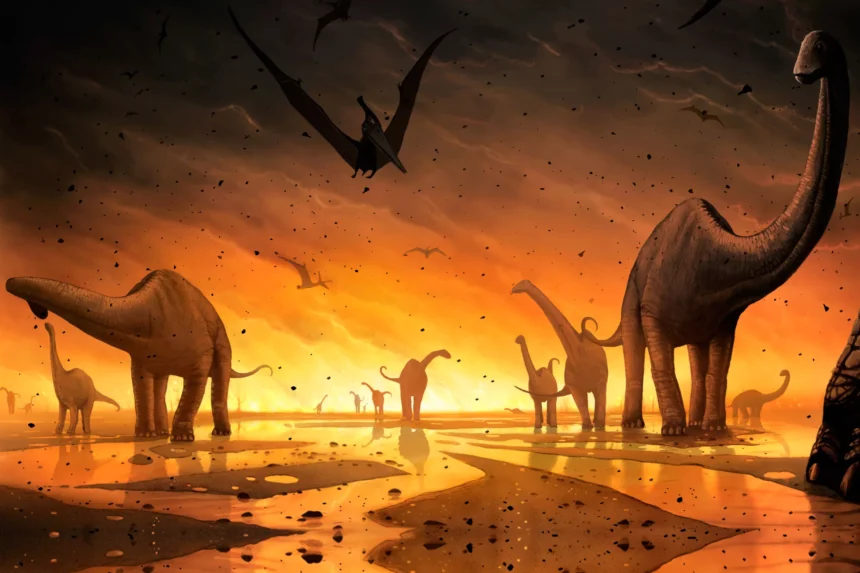The extinction of the dinosaurs, which marked the end of the Cretaceous period, remains one of the most enigmatic events in Earth’s history. For decades, the prevailing theory pointed to a catastrophic asteroid impact as the primary cause. However, a deeper investigation into the aftermath of this impact reveals that it was not just the colossal collision itself but the ensuing environmental changes that led to the extinction of these majestic creatures. In this article, we will explore the compelling evidence that points to “deadly dust” as the true cause of the dinosaur extinction.
The Asteroid Impact
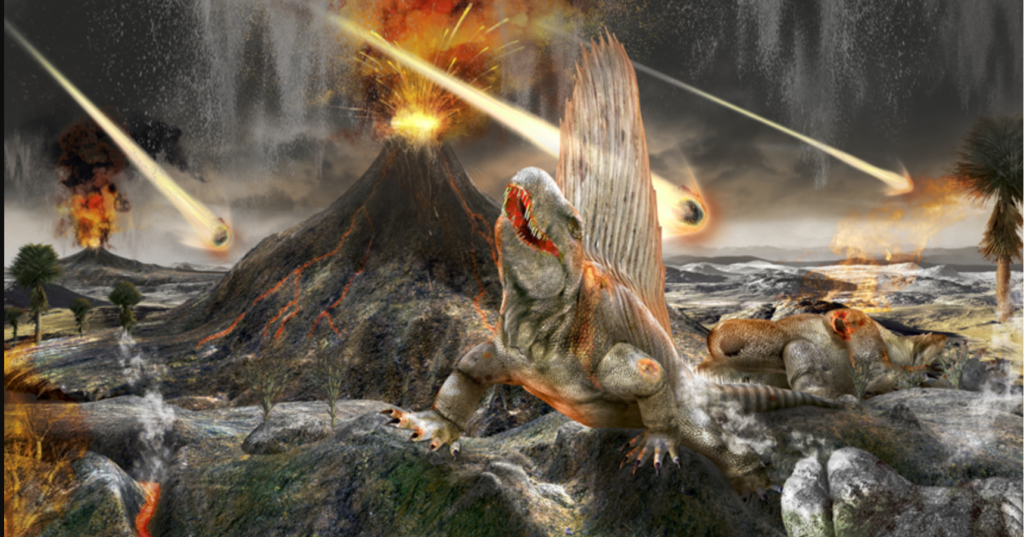
Around 66 million years ago, a massive asteroid, estimated to be about 6 miles (10 kilometers) wide, struck what is now the Yucatán Peninsula in Mexico. The impact was so colossal that it released energy equivalent to billions of atomic bombs, leading to a chain reaction of devastation.
Also read : Natural Selection Surprises: Evolutionary Insights From Florida’s Wild Lizards
Immediate Effects of the Impact
The immediate effects of the impact were catastrophic. It generated immense heat, incinerating vast forests and producing massive firestorms. Shockwaves, tsunamis, and earthquakes further contributed to the immediate devastation. But the most significant consequence was the massive dust and debris ejected into the atmosphere.
Deadly Dust Cloud
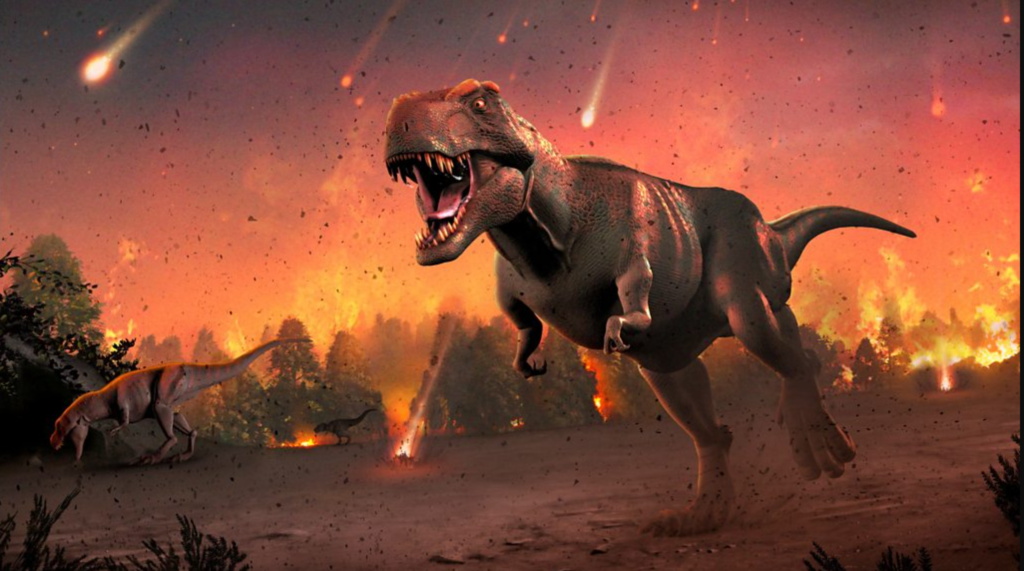
The immense impact sent an enormous plume of dust, soot, and aerosols high into the atmosphere. This dust cloud effectively blocked out the sun for an extended period, causing a dramatic drop in global temperatures. It led to a phenomenon known as “impact winter.”
Impact Winter and Its Consequences
The impact winter was the key to understanding the dinosaur extinction. The prolonged darkness disrupted the global climate in several ways:
- Global Cooling: The dust and aerosols blocked sunlight, causing a significant drop in temperatures. The resulting cooling made it difficult for cold-blooded creatures like dinosaurs to survive.
- Reduced Photosynthesis: The absence of sunlight hindered photosynthesis in plants, which disrupted the food chain. As plant life dwindled, herbivores had less food, and subsequently, carnivores had less prey.
- Acid Rain: Chemical reactions in the atmosphere led to acid rain, further damaging ecosystems.
- Ozone Depletion: The dust cloud also caused a temporary depletion of the ozone layer, increasing the levels of harmful ultraviolet (UV) radiation, which was detrimental to many forms of life.
The Impact on Dinosaurs

Dinosaurs, especially the large and less adaptable species, struggled to survive in these harsh conditions. With limited food, frigid temperatures, and increased UV radiation, they faced a significant challenge. The drastic environmental changes proved insurmountable for many dinosaur species.
Evidence from Fossils
The evidence supporting the theory of “deadly dust” is found in the geological record. Fossils of plants, marine life, and terrestrial animals reveal a dramatic shift in the ecosystem, consistent with the effects of an impact winter.
The Survival of the Smaller
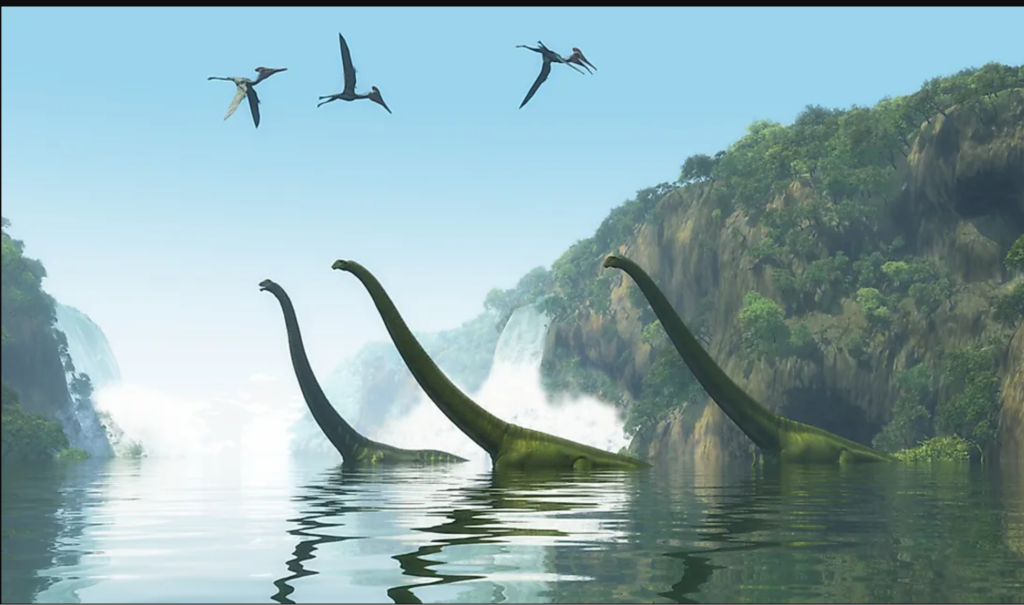
While the dinosaurs, particularly the large and specialized species, struggled to adapt to the new environmental conditions, some smaller and more adaptable creatures found ways to survive. Mammals, which had been relatively small and inconspicuous during the age of dinosaurs, began to fill the ecological niches left vacant by the massive reptiles. They adapted to a wide range of diets and habitats, and over time, they evolved into the diverse group of animals we see today.
The Rise of Mammals
The extinction of the dinosaurs allowed the mammals to flourish. They diversified into various forms, evolving to occupy different ecological roles. Some became large herbivores, while others developed into predators. The eventual emergence of primates within the mammalian lineage paved the way for the evolution of humans.
Implications for Modern Life
The study of the dinosaur extinction event and the role of “deadly dust” is not merely a historical curiosity but carries lessons for our understanding of environmental challenges today:
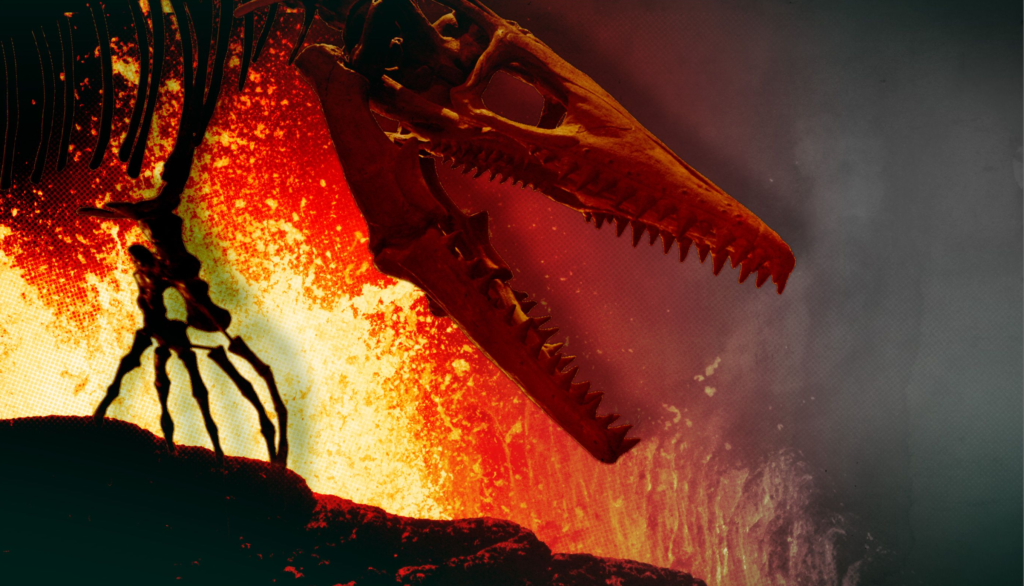
- Climate Change: The impact winter and its consequences provide insights into how climate change, whether caused by natural events or human activities, can disrupt ecosystems and lead to extinctions.
- Biodiversity: The rapid evolution and diversification of mammals after the extinction event illustrate the resilience of life on Earth. It underscores the importance of maintaining biodiversity to ensure the adaptability of ecosystems.
- Global Catastrophes: The asteroid impact and its aftermath serve as a reminder that the Earth is vulnerable to catastrophic events from space. Understanding these events is crucial for planetary defense strategies.
In conclusion, the extinction of the dinosaurs, while triggered by an asteroid impact, was primarily a consequence of the “deadly dust” produced by the collision. This impact winter disrupted the global climate, causing a cascade of environmental changes that led to the extinction of many species. The survival and subsequent diversification of mammals, including our distant ancestors, are a testament to the resilience of life on Earth and its capacity to adapt to the most challenging circumstances. The dinosaur extinction serves as a stark reminder of the vulnerability and unpredictability of our planet’s history and the importance of protecting the diversity of life on Earth.
Also read : The Secret Code Of Nature: The Way Plants “Speak” Through The Air Via VOC







